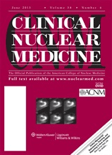
CLINICAL NUCLEAR MEDICINE
Scope & Guideline
Illuminating the Path of Nuclear Medicine Excellence
Introduction
Aims and Scopes
- Radiopharmaceutical Applications:
The journal publishes research on the development, application, and evaluation of radiopharmaceuticals in diagnosing and treating a wide range of diseases, including cancers, neurodegenerative disorders, and cardiovascular conditions. - Advanced Imaging Techniques:
It emphasizes the use of advanced imaging modalities such as PET, SPECT, and hybrid imaging techniques (e.g., PET/CT and PET/MRI) to enhance diagnostic accuracy and treatment planning. - Clinical Case Studies:
The journal features detailed case reports and studies that illustrate the clinical utility and challenges of nuclear medicine in real-world settings, providing valuable insights into patient management. - Theranostics:
A significant focus is placed on theranostics, which combines therapy and diagnostics, particularly in the context of personalized medicine for cancer treatment. - Emerging Technologies:
The journal explores emerging technologies and methodologies, including artificial intelligence and machine learning applications in imaging analysis and interpretation.
Trending and Emerging
- Integration of AI in Imaging:
There is a growing trend towards the integration of artificial intelligence and machine learning in imaging analysis, enhancing diagnostic accuracy and workflow efficiency. - Radiomics and Quantitative Imaging:
Research on radiomics, which involves extracting large amounts of features from medical images, is on the rise, facilitating personalized treatment strategies based on imaging data. - Theranostic Approaches:
The concept of theranostics is increasingly prominent, focusing on personalized medicine where diagnostic imaging and therapeutic interventions are combined, particularly in oncology. - Pediatric Applications:
There is an emerging interest in the application of nuclear medicine techniques in pediatric populations, addressing unique challenges and considerations in this demographic. - COVID-19 Related Studies:
The journal has seen an increase in studies related to the impacts of COVID-19, including vaccine-related imaging findings and the long-term effects of the virus on various organ systems.
Declining or Waning
- Traditional Imaging Techniques:
There has been a noticeable decrease in studies focusing solely on traditional imaging techniques like plain X-rays and basic scintigraphy, as more advanced imaging modalities gain traction. - Non-Specific Case Reports:
The journal has moved away from general non-specific case reports that do not contribute significantly to the advancement of knowledge or clinical practice, focusing instead on more impactful and innovative studies. - Basic Pharmacology Studies:
Research centered around basic pharmacological studies of radiopharmaceuticals has diminished, as there is a greater emphasis on clinical applications and outcomes. - Limited Focus on Non-Malignant Conditions:
There is a waning interest in studies solely addressing non-malignant conditions, as the journal increasingly prioritizes cancer-related imaging and treatment advancements.
Similar Journals
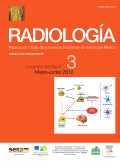
RADIOLOGIA
Exploring the complexities of imaging with expert insights.RADIOLOGIA is a distinguished journal in the field of Radiology, Nuclear Medicine, and Imaging, published by Elsevier España. With a rich history since its inception in 1961, this journal serves as a vital resource for professionals, researchers, and students interested in the latest developments and innovations in radiological practices. Although it is currently categorized in the Q3 quartile, its contributions continue to shape and advance clinical practices and research in radiology. RADIOLOGIA provides a platform for scholarly articles, reviews, and case studies that underpin the complexities of imaging techniques and nuclear medicine, while also addressing emerging trends and technologies. The journal is indexed with the ISSN 0033-8338 and E-ISSN 1578-178X, reflecting its accessibility to a global audience dedicated to enhancing patient care through advanced imaging methodologies. Readers can find the journal published in Spain and benefit from its commitment to disseminating pertinent research across diverse aspects of radiology.
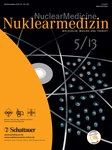
NUKLEARMEDIZIN-NUCLEAR MEDICINE
Elevating Standards in Radiology and Imaging Practices.NUKLEARMEDIZIN-NUCLEAR MEDICINE is a prestigious journal published by Georg Thieme Verlag KG, focusing on pivotal advancements in the fields of Nuclear Medicine, Radiology, and Imaging. Established in 1959, this journal has served as a critical platform for disseminating innovative research, reviews, and clinical guidelines until its anticipated convergence in 2024. With an ISSN of 0029-5566 and an E-ISSN of 2567-6407, NUKLEARMEDIZIN is acknowledged in the academic community as a Q3 category journal within Medicine (miscellaneous) and Radiology, Nuclear Medicine, and Imaging as of 2023, highlighting its ongoing contribution to the interdisciplinary dialogue in healthcare. Although the journal does not currently offer open access, it remains accessible to professionals and students through various academic databases, ensuring that cutting-edge knowledge in this growing field is shared widely. Researchers interested in the latest methods and technologies in Nuclear Medicine will find NUKLEARMEDIZIN a valuable resource for enhancing their work and understanding the complexities of modern imaging modalities.
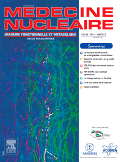
Medecine Nucleaire-Imagerie Fonctionnelle et Metabolique
Harnessing Insights in Radiological Technology.Medicine Nucleaire-Imagerie Fonctionnelle et Metabolique is a prominent journal published by Elsevier France-Editions Scientifiques Medicales Elsevier, dedicated to the specialized fields of nuclear medicine and functional imaging. With an ISSN of 0928-1258 and an E-ISSN of 1878-6820, this esteemed publication has been a crucial platform for the dissemination of research and developments in the discipline since its inception in 1993. Covering a wide array of topics within biophysics, radiological and ultrasound technology, and radiology, the journal currently holds a Q4 category ranking in these fields, reflecting its significance within the academic community. Although there are currently no open access options available for readers, the journal caters to a niche audience of researchers, professionals, and students who seek to enhance their understanding of metabolic imaging and its applications. The 2023 Scopus ranks indicate its position as an emerging source of knowledge in a competitive landscape, making it an important resource for the latest studies and innovations in nuclear medicine.
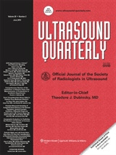
Ultrasound Quarterly
Transforming Patient Care Through Imaging Insights.Ultrasound Quarterly is a leading journal published by Lippincott Williams & Wilkins, dedicated to advancing knowledge and practice in the fields of radiology, nuclear medicine, and imaging. Established in 1988, the journal has served as a vital platform for researchers, clinicians, and students seeking to stay abreast of the latest advancements and techniques in ultrasound technology. With an impact factor that reflects its significance in the field—ranking in the Q3 category within its specialty based on the 2023 metrics—this journal reaches a global audience, facilitating knowledge dissemination and fostering innovation. Ultrasound Quarterly publishes original research, reviews, and clinical studies, making it an essential resource for professionals committed to enhancing patient care through effective imaging practices. To explore its comprehensive articles, visit the journal's website for easy access to the latest research findings.

EUROPEAN JOURNAL OF NUCLEAR MEDICINE AND MOLECULAR IMAGING
Illuminating the Path of Molecular Imaging DiscoveriesThe European Journal of Nuclear Medicine and Molecular Imaging is a prestigious, peer-reviewed journal published by Springer, dedicated to advancing the field of nuclear medicine and molecular imaging. With an impressive impact factor and ranked in the Q1 category for both Medicine and Radiology, Nuclear Medicine and Imaging, this journal is a pivotal platform for researchers and practitioners to disseminate significant findings from 1996 to the present, reflecting the evolution of the field. The journal boasts a notable Scopus rank, standing at #8 out of 333 in its category, placing it in the top 3% of published works, which highlights its critical importance in shaping contemporary practices and research innovations. Although it does not offer an open-access model, the journal provides various access options to ensure that important research is accessible to professionals, students, and academics alike. Through rigorous peer review and a commitment to high-quality publication, the European Journal of Nuclear Medicine and Molecular Imaging plays an essential role in the advancement of nuclear medicine, contributing to better diagnostic and therapeutic outcomes globally.
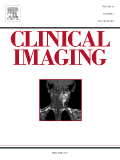
Clinical Imaging
Transforming Imaging Science for Clinical ExcellenceClinical Imaging, published by Elsevier Science Inc, is a renowned journal dedicated to the field of radiology, nuclear medicine, and imaging. With an ISSN of 0899-7071 and an E-ISSN of 1873-4499, this esteemed publication has established its significance in advancing imaging science since its inception in 1989 and continues to make impactful contributions to the discipline through 2024. The journal holds a prestigious Q2 ranking in the category of Radiology, Nuclear Medicine, and Imaging, reflecting its critical role in bridging research and clinical practice. Currently ranked #113 out of 333 by Scopus, with a notable 66th percentile, it offers a platform for disseminating high-quality research, reviews, and case studies that inspire innovation and enhance imaging techniques. Although it primarily functions as a subscription-based journal, it remains dedicated to accessibility and the dissemination of pivotal findings that inform both academia and clinical settings. Clinical Imaging is essential for researchers, professionals, and students alike, offering insights that shape the future of diagnostic imaging.
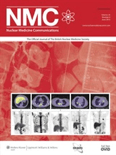
NUCLEAR MEDICINE COMMUNICATIONS
Fostering Scholarly Exchange in Nuclear MedicineNUCLEAR MEDICINE COMMUNICATIONS is a prestigious academic journal published by Lippincott Williams & Wilkins, focusing on the multifaceted field of nuclear medicine and its applications in diagnostics and therapy. With a solid history spanning from 1980 to 2024, this journal provides a platform for peer-reviewed research articles, clinical studies, and innovative techniques that enrich the knowledge base within the fields of {{medicinal applications, patient care, and imaging technology}}. Currently classified in the Q3 quartile for both Medicine (Miscellaneous) and Radiology, Nuclear Medicine, and Imaging, the journal reflects its commitment to advancing healthcare practices. Although it does not offer open access options, its accessibility through reputable institutions promotes scholarly exchange among researchers, professionals, and students alike. The critical insights provided in NUCLEAR MEDICINE COMMUNICATIONS are essential for those dedicated to enhancing patient outcomes through cutting-edge nuclear medical technologies.
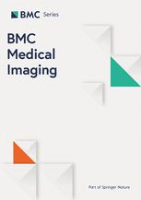
BMC MEDICAL IMAGING
Exploring Cutting-edge Techniques in Radiology and Nuclear Medicine.BMC Medical Imaging is a premier open-access journal dedicated to advancing the field of radiology, nuclear medicine, and imaging technologies. Published by BMC in the United Kingdom, this journal serves as a vital resource for researchers, clinicians, and students, fostering a collaborative environment for sharing innovative findings and methodologies in medical imaging. With a commendable impact factor and an impressive Scopus ranking within the top 35% of its category, BMC Medical Imaging provides a platform for high-quality research to be disseminated widely and freely since its inception in 2001. The journal aims to cover a diverse array of topics, from advanced imaging techniques to their clinical applications, enhancing the understanding and effectiveness of diagnostic practices. By contributing to the body of knowledge and facilitating open access to research, BMC Medical Imaging plays a pivotal role in shaping the future of medical imaging and improving patient care.

NUCLEAR MEDICINE REVIEW
Pioneering Insights in Nuclear ImagingNUCLEAR MEDICINE REVIEW is a distinguished journal in the field of radiology, nuclear medicine, and imaging, published by VIA MEDICA in Poland. Since its transition to an open access format in 1999, this journal has been dedicated to promoting the dissemination of knowledge and research findings across a global audience. With a focus on innovative approaches and advancements in nuclear medicine, it aims to serve as a key resource for researchers, professionals, and students who are working to further the understanding of nuclear imaging and its applications. In 2023, the journal was classified in the Q3 category within Radiology, Nuclear Medicine and Imaging, and Q4 in the broader category of Medicine (miscellaneous), highlighting its growing reputation in the academic community. As of the latest assessments, the journal has been ranked #235 out of 333 in its field according to Scopus metrics, reflecting its commitment to excellence and the relevance of its published works. The NUCLEAR MEDICINE REVIEW is a pivotal platform for those engaged in cutting-edge research, providing insights that drive the evolution of medical imaging and therapeutic techniques.

QUARTERLY JOURNAL OF NUCLEAR MEDICINE AND MOLECULAR IMAGING
Advancing the Frontiers of Nuclear Medicine and Imaging.The Quarterly Journal of Nuclear Medicine and Molecular Imaging, published by Edizioni Minerva Medica in Italy, serves as a pivotal platform for researchers and practitioners in the fields of Nuclear Medicine and Molecular Imaging. With an ISSN of 1824-4785 and an E-ISSN of 1827-1936, this journal boasts a respectable impact factor and is positioned in the Q3 quartile of the Radiology, Nuclear Medicine and Imaging category, based on the latest 2023 evaluations. As the journal continues to converge from its inception in 2004 to its anticipated expansions through 2024, it aims to disseminate high-quality, peer-reviewed articles that advance the frontier of imaging technologies and their applications in clinical practice. Researchers, professionals, and students are encouraged to contribute to its diverse scope, which encompasses innovative research, clinical findings, and reviews that encapsulate cutting-edge advancements in the field, highlighting its importance as an essential resource for knowledge and collaboration.